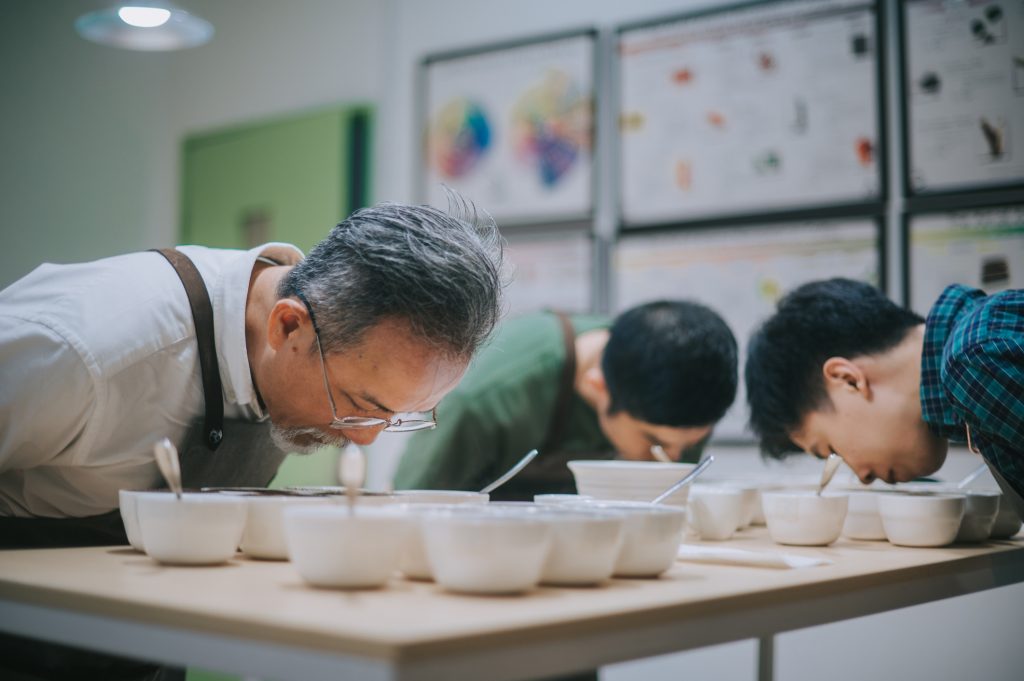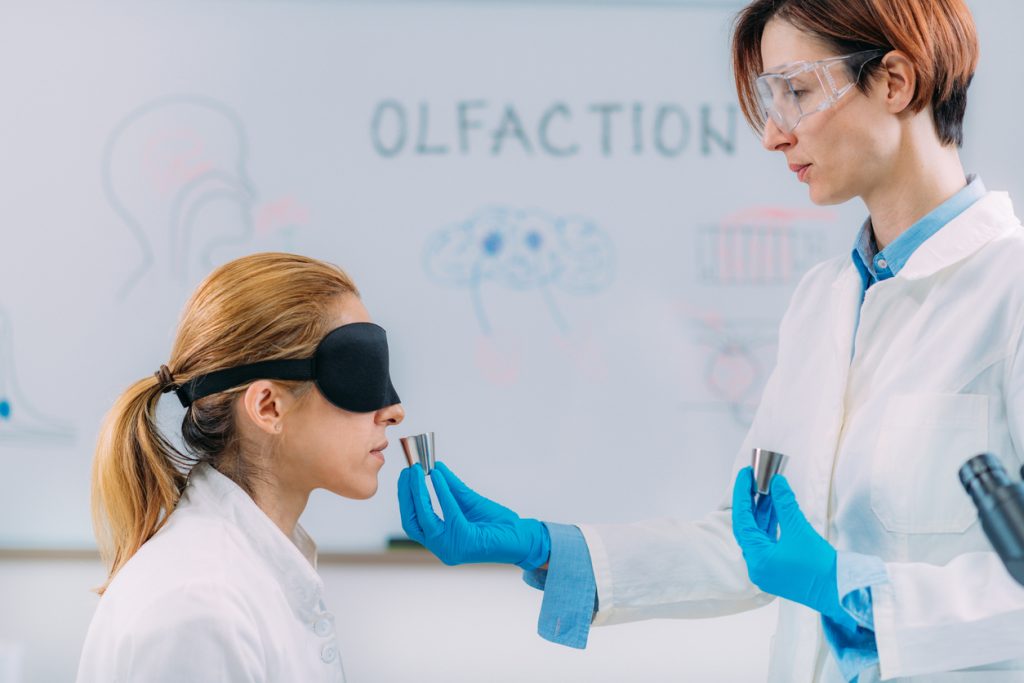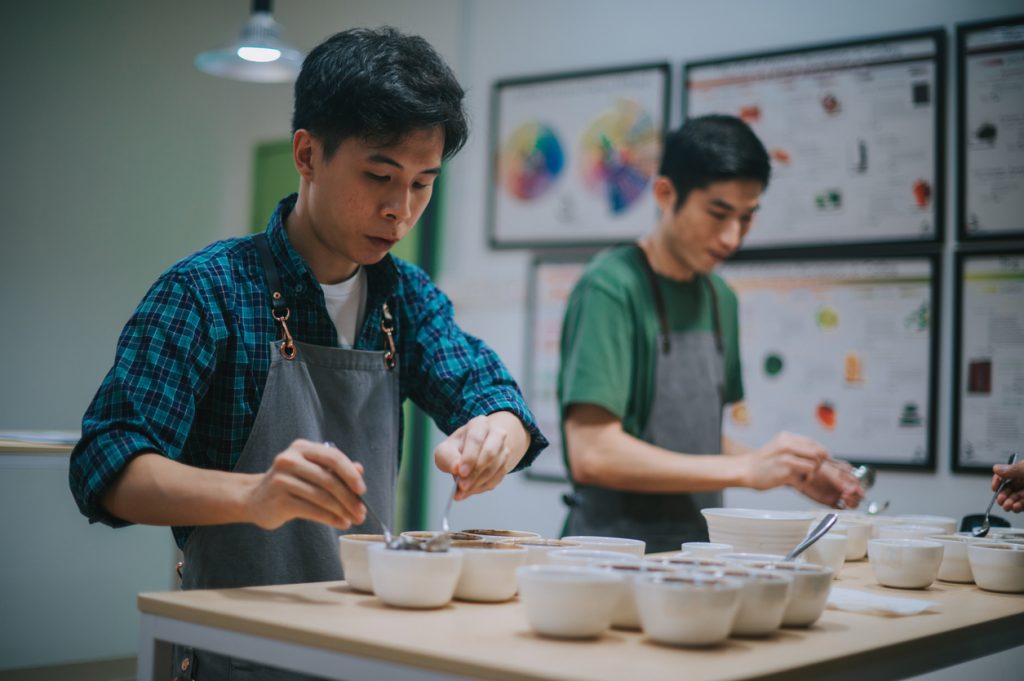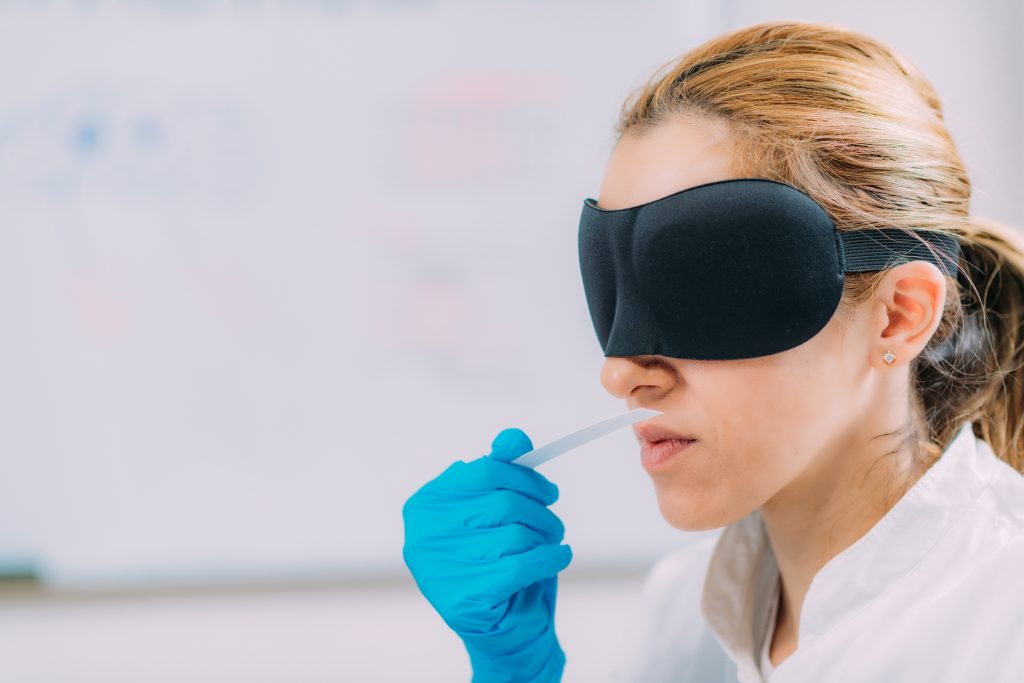Establishing a panel, for evaluating coffee involves a process that includes thorough planning, selection, training and calibration of panel members. This article explores the steps. Recommended practices for creating an efficient sensory panel by drawing insights from various sources on sensory assessment.

1. Introduction to Sensory Panels
A sensory panel consists of individuals chosen and trained to assess products based on their attributes. In the coffee sector these panels play a role in evaluating quality, consistency and consumer preferences. The main aim is to provide dependable data that can guide product development, quality assurance and marketing strategies (Stone and Sidel 2004; Kemp, Hollowood and Hort 2018).
2. Planning and Preparation
2.1. Define Objectives and Scope
The initial step in establishing a panel is clearly outlining the objectives. Which specific sensory characteristics of coffee do you aim to evaluate? These could encompass aroma, taste, acidity, body feel, aftertaste and overall harmony. Understanding the evaluations scope aids, in designing tests and selecting panelists (Lawless and Heymann 2010; Fernández Alduenda & Giuliano 2021).
2.2. Select the Right Environment
The environment where sensory evaluations take place should be controlled to minimize external influences. The testing area should be free from noise, odors, and distractions. The lighting should be neutral, and red lighting can be used to mask color differences in samples, preventing visual biases (Meilgaard, Civille, and Carr, 2016).
3. Selecting Panel Members
3.1. Recruitment Criteria
Selecting the individuals for the panel is crucial. Panelists should show an interest in coffee. Ideally have some experience in coffee tasting. However, diversity in the panel is beneficial as it reflects a broader range of consumer preferences (Kemp, Hollowood, and Hort, 2018).

3.2. Evaluating Potential Panelists
The screening process involves assessing candidates sensory acuity and their ability to detect differences, in coffee samples. Screening methods include screening questionnaires and basic taste tests (sweet, sour, salty, bitter and umami) to evaluate candidates sensory sensitivity (Lawless and Heymann, 2010; Stone and Sidel, 2004).
3.3. Considering Psychological Factors
It’s important to take into account aspects that may impact perception. Factors, like motivation, interest and attitude toward the product being assessed can have an impact, on how reliable the responses of panelistsre Meilgaard, Civille and Carr 2016).
4. Training Panel Members
4.1. Sensory Training
Training is a critical phase that transforms recruited individuals into skilled sensory analysts. The training should cover:
- Basic Taste Identification: Familiarizing panelists with the five basic tastes using standard solutions (Stone and Sidel, 2004).
- Aroma Recognition: Using aroma kits to help panelists identify and describe common coffee aromas (Kemp, Hollowood, and Hort, 2018).
- Terminology: Establishing a common language for describing sensory attributes, which is essential for consistent and reliable communication (Fernández-Alduenda and Giuliano, 2021).
4.2. Calibration and Consistency
Panelists must be calibrated to ensure consistency in their evaluations. This involves:
- Group Calibration Sessions: Regular sessions where panelists evaluate the same sample and discuss their perceptions to align their understanding (Meilgaard, Civille, and Carr, 2016).
- Reference Standards: Using reference samples with known attributes to calibrate the panelists’ responses (Lawless and Heymann, 2010).

4.3. Practice Sessions
Conducting regular practice sessions helps maintain and improve the panelists’ skills. These sessions can include:
- Blind Tastings: Where panelists evaluate unknown samples to refine their detection and descriptive abilities.
- Feedback and Discussion: Providing feedback on panelists’ performance and discussing discrepancies to improve consistency (Stone and Sidel, 2004; Fernández-Alduenda and Giuliano, 2021).
5. Sensory Testing Methodologies
5.1. Discriminative Tests
Discriminative tests determine whether there are detectable differences between samples. Common tests include:
- Triangle Test: Panelists are presented with three samples, two of which are identical, and asked to identify the odd one out (Kemp, Hollowood, and Hort, 2018).
- Duo-Trio Test: Panelists are given a reference sample and two test samples, one of which matches the reference. They must identify the matching sample (Meilgaard, Civille, and Carr, 2016).
5.2. Descriptive Analysis
Descriptive analysis provides detailed information about the sensory attributes of coffee. Panelists describe the intensity and quality of various attributes such as aroma, flavor, acidity, body, and aftertaste. The SCA cupping form is a common tool used in coffee descriptive analysis (Fernández-Alduenda and Giuliano, 2021).
5.3. Affective Tests
Affective tests measure panelists’ preferences and acceptance of coffee samples. These tests are subjective and help understand consumer preferences (Lawless and Heymann, 2010).
6. Statistical Analysis and Interpretation
6.1. Data Collection
Collecting data systematically is crucial for accurate analysis. Use structured forms and electronic data collection tools to ensure consistency (Stone and Sidel, 2004; Meilgaard, Civille, and Carr, 2016).
6.2. Statistical Methods
Applying appropriate statistical methods is essential for interpreting sensory data. Common methods include:
- Analysis of Variance (ANOVA): To determine if there are significant differences between samples.
- Principal Component Analysis (PCA): To identify patterns and relationships between sensory attributes (Lawless and Heymann, 2010; Meilgaard, Civille, and Carr, 2016).
6.3. Interpretation and Decision Making
Comprehending the outcomes involves recognizing the importance well as practical implications of the results. Choices regarding product enhancement, quality assurance and marketing strategies ought to be grounded on an examination of the information (Stone and Sidel 2004).
7. Maintaining Panel Performance
7.1. Ongoing Training and Calibration
Training sessions along, with calibration activities are crucial to uphold panel performance. Implementing reference standards and updating training materials can help ensure that the panelists skills stay Meilgaard, Civille and Carr 2016).
7.2. Monitoring and Feedback
It is essential to monitor each panelists performance and provide feedback. Tools, like performance charts and control charts can aid in tracking consistency and pinpointing areas for improvement (Kemp, Hollowood and Hort 2018).
7.3. Panel Refreshment
Periodically refreshing the panel by recruiting members and retraining existing ones is key to maintaining a level of performance. This practice also guarantees that the panel continues to represent the target consumer population Lawless and Heymann 2010).
8. Best Practices and Ethical Considerations
8.1. Ethical Considerations
It’s crucial to ensure that the panel setup aligns with guidelines concerning informed consent, confidentiality and respectful treatment of panelists. Upholding standards is vital for upholding the credibility of the evaluation process (Stone and Sidel 2004; Kemp, Hollowood and Hort 2018).

8.2. Best Practices
Adopting best practices in sensory evaluation includes:
- Standard Operating Procedures (SOPs): Developing and adhering to SOPs for all aspects of the sensory evaluation process.
- Continuous Improvement: Consistently enhancing the evaluation process by incorporating feedback and staying updated with research findings (Meilgaard, Civille and Carr 2016).
9. Advanced Insights
9.1. Sensory Physiology and Psychology
It’s crucial to grasp the physiology and psychology related to taste and aroma perception. Training should cover understanding these reactions. How they influence perceived flavors (Lawless and Heymann 2010).
9.2. Multisensory Interactions
The perception of coffee flavor is a multisensory experience. Training panelists to recognize the interactions between taste, smell, and trigeminal sensations (such as astringency or mouthfeel) can enhance their descriptive abilities (Stone and Sidel, 2004).
9.3. Variability in Sensory Sensitivity
Panelists may have varying levels of sensitivity to odors and tastes. Regular calibration can help reduce these differences. Knowing and recording each panelists baseline sensitivity can further enhance evaluation accuracy (Meilgaard, Civille and Carr 2016).
Conclusion
Setting up a sensory panel for coffee evaluation is a detailed and ongoing process that requires careful planning, rigorous training, and continuous monitoring. By following the guidelines outlined in this article and integrating insights from various sources, you can establish a reliable and effective sensory panel that provides valuable insights for product development, quality control, and consumer satisfaction in the coffee industry.
In summary, the steps involve:
- Defining clear objectives and selecting the right environment.
- Recruiting and screening panel members based on specific criteria.
- Providing comprehensive training and regular calibration sessions.
- Employing appropriate sensory testing methodologies.
- Analyzing data with suitable statistical methods and making informed decisions.
- Maintaining panel performance through ongoing training and feedback.
- Adhering to best practices and ethical considerations.
By applying these approaches you can guarantee that your panel functions effectively providing trustworthy information to advance your coffee assessment projects.
References
- Stone, H., & Sidel, J. L. (2004). Sensory Evaluation Practices. Academic Press.
- Lawless, H. T., & Heymann, H. (2010). Sensory Evaluation of Food: Principles and Practices. Springer.
- Meilgaard, M. C., Civille, G. V., & Carr, B. T. (2016). Sensory Evaluation Techniques. CRC Press.
- Kemp, S. E., Hollowood, T., & Hort, J. (2018). Sensory Evaluation: A Practical Handbook. Wiley-Blackwell.
- Fernández-Alduenda, M. R., & Giuliano, P. (2021). Coffee Sensory and Cupping Handbook. Specialty Coffee Association.
- Steen, I. (2020). Sensory Intermediate. CoffeeMind.

Leave a Reply